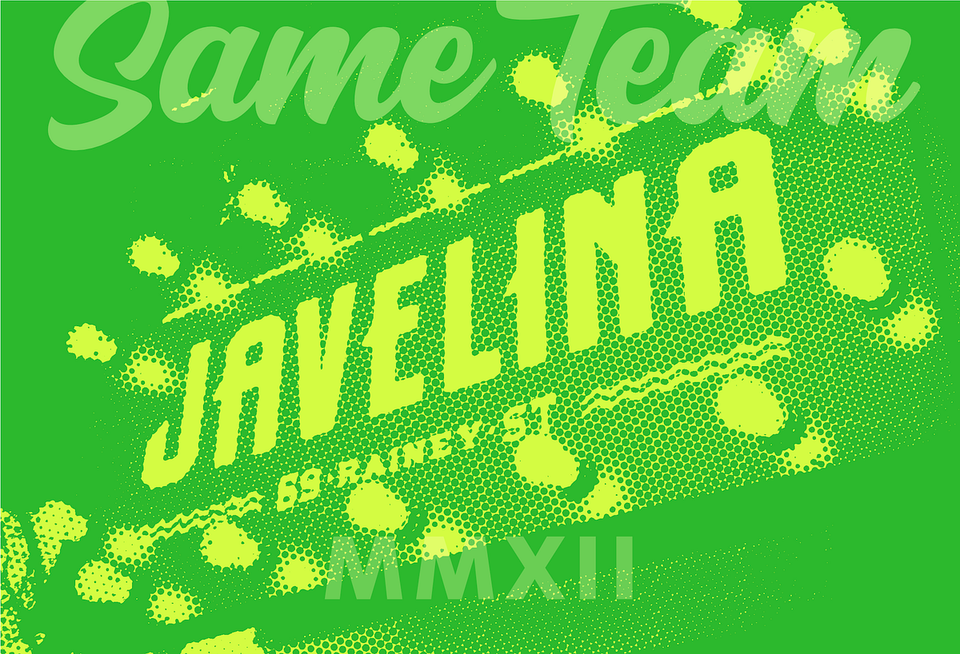Established 2012.

Let me tell you about the time Happy Cog* almost tore itself apart about a year after I merged my studio, Airbag Industries, into the company, and how that event sparked the foundation of Same Team Partners.
Many years ago, Brett and I worked together at a studio where I was a co-owner and he was the VP of Project Management. Despite our titles, we worked together as often as possible because, we were good partners, preferring to find solutions rather than posturing for personal victories and narcissistic recognition. We didn’t work on top of each other and if there were any issues between us, we worked through it promptly and directly. And we could see many of the same things that seemed oblivious to other leaders in the company.
Back to the troubles—In hindsight, after I moved Airbag into Happy Cog, we should have come together, aligned on what we wanted to be in the future, and then co-created the right processes and operations that were needed to succeed. Instead, we tried a different route running each studio as if it were a separate company figuring it was the easiest path forward. Why fix what ain’t broke, right? If only. It didn’t take long, maybe a year, before our amazing culture (it was amazing back then) started to take a nose dive. Instead of everyone feeling like they were a part of the same team, one company, we devolved into fiefdoms based on studio location: Austin vs. Philadelphia. Our happy work place had become crazy stressful. The tension was building and It felt like we were about to break.
Brett had flown over from Philly to work in the Austin studio for the week and get his own perspective on the vibe in Austin. After a few days of soaking things up, we went to Javelina on Rainey Street (RIP) to grab a beer and discuss our current situation. Nothing we tried as a company was working. The ideas were either trying to be too clever or came across as lip service. We needed something radical and on that day in 2012, Brett and I came up with a strategy that had an immediate and lasting positive impact.
While there was a lot of pride in our separate studios people at Happy Cog were more loyal to the brand and what is stood for: The quality of our work. Despite our differences, each person was passionate about delivering the best work in the industry. That’s not marketing bullshit, it was real.
As part of a recent re-org, we centralized project management to the Philadelphia office for a few reasons I won’t go into here. It was the right move to make but it also meant that everyone in Austin now had to work with remote PMs. This was instantly weird, but I noticed that it didn’t seem to phase anyone in either location. Everyone preferred working better together over a desire or need to have everyone in the same location. I had already experienced this first hand as my first couple of employees at Airbag were in different states three time zones away. We were “remote first” long before it became a thing. Distance did not detract from our ability to collaborate and deliver extraordinary work.
I also had another observation. Now that our people in Austin had to work with a remote colleague, their experience was still going to be different from everyone (except the PMs) in Philadelphia. The problem we tried to solve with the re-org was going to flair back up if we didn’t make more changes. In reality, we didn’t fix anything and had kicked our problems down the road.
With a fresh beer and fresh minds. Brett and I started to catalog all of our people with their roles and skill levels. We had PMs, designers, developers, and a few engineers — a team of thirty-five people in all. After running through different configurations, we came up with a plan to create four teams of designers and developers with a dedicated project manager. Since engineers didn’t work on every project they could jump between teams when and where necessary. To make this work we would need to make another critical change. We would have to virtualize the company. If we took away the requirement for daily, physical proximity to determine who works on what team we could pair the right people and create stronger teams according to abilities, skills, experience, etc.
Brett and I had to get another beer so we could toast. It took some convincing, but weeks later we were able to persuade the leadership that this was worth committing to and trying. While the announcement of what, why, and how we were going to make changes was a tad confusing (the subject for a future blog post on what not to do) everyone loved the idea and it was an immediate hit.
The new virtual groups created their own team names, Slack channels, and logos…some of them even went as far as making t-shirts. Within a week — no joke — all of our cultural problems vanished. The stress evaporated and morale shot back up. Our cultural batteries were re-energized stronger than ever.
What we did back in 2012 ignited our passion for getting people together in better ways to radically improve how they communicate, collaborate, and produce their best work. While our paths split for a few years, Brett and I have come back with even more energy, excitement, experience, and ideas to help improve agencies, studios, and in-house teams find their best form. If this story resonates with you then let’s talk. If anything we’d like to meet you and chat.
* The version of Happy Cog I am referring to in this story is a generation prior to the current company.

Member discussion